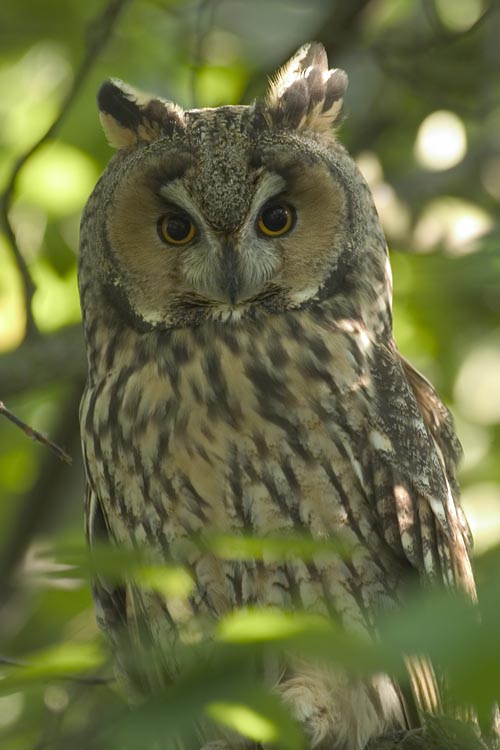Long-eared Owl (Asio otus) - Wiki Long-eared Owl
From Wikipedia, the free encyclopedia
[Photo] Long-eared Owl (Asio otus) de:Waldohreule. german description: Das Foto zeigt eine Waldohreule in freier Wildbahn. Nur selten sieht man die nachtaktiven Tiere tags??ber. Fotodaten: Canon EOS 10D, EF 300 mm 2,8 mit 1,4x Konverter, Dreibein, Spiegelvorausl??sung. Photo taken by Sascha R??sner (http://de.wikipedia.org/wiki/Benutzer:Sascha_R%C3%B6sner). date: 2004.
Copyright (C) 2004 Sascha R??sner
Permission is granted to copy, distribute and/or modify this document under the terms of the GNU Free Documentation License, Version 1.2 or any later version published by the Free Software Foundation; with no Invariant Sections, no Front-Cover Texts, and no Back-Cover Texts. A copy of the license is included in the section entitled "GNU Free Documentation License". |
The
Long-eared Owl (
Asio otus) is a species of
owl which breeds in Europe, Asia, and North America. Breeding season is from February to July. This bird is partially migratory, moving south in winter from the northern parts of its range. Its habitat is forest close to open country.
Asio otus is more elusive than other
owls in this family.
Classification
This species is a part of the larger grouping of
owls known as typical
owls, family
Strigidae, which contains most species of
owl. The other grouping of
owls are the
barn owls, family
Tytonidae.
Appearance
The
Long-eared Owl is a medium sized
owl, 31-37 cm in length with an 86-98 cm wingspan. The
Long-eared Owl carries its blackish tufts, which are positioned in the center of the head, in an erect posture. The females are larger in size and darker in coloration than the males. The
Long-eared Owl’s brownish feathers are vertically streaked. Tarsus and toes are entirely feathered. Eye disks are also characteristic in this species. However, eye disks of A.
otus are darker in color or rusty-orange. This nocturnal species is perhaps most easily seen perched in a tree in its daytime roost.
Behavior
It nests in trees, often conifers, using the old stick nests of other
birds such as crows, ravens and magpies (Family
Corvidae) and various hawks. The average clutch size is 4-6 eggs, and incubation time averages from 25-30 days. It will readily use artificial nesting baskets. It roosts and nests in temperate forests. An unusual characteristic of this species is its communal nesting in thickets during the winter months.
Asio otus is nocturnal, and it hunts over open country by night. It is very long winged, like the similar
Short-eared Owl, and glides slowly on stiff wings when hunting. Its food is mainly
rodents, small mammals, and
birds.
http://en.wikipedia.org/wiki/Long-eared_Owl| The text in this page is based on the copyrighted Wikipedia article shown in above URL. It is used under the GNU Free Documentation License. You may redistribute it, verbatim or modified, providing that you comply with the terms of the GFDL. |
